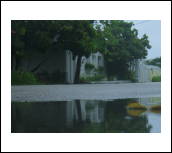![openphotonet_diluvio-universale[1]](http://www.emergriskreduction.com/wp-content/uploads/2013/09/openphotonet_diluvio-universale1.jpg) Last month’s flood event in Colorado, and a June 2013 event in Alberta emphasize that flooding is one of the most severe, ruthless, and destructive of disasters. Most of the natural disasters to which I have responded have been somehow related to flood waters. The SE Asia tsunami was, in essence, a flood, whose source was an underwater earthquake that resulted in massive waves devastating Indian Ocean shorelines. Hurricane Katrina was a flood event, whose source was massive winds creating a record-breaking sea surge that devastated the USA Gulf Coast shoreline.
Last month’s flood event in Colorado, and a June 2013 event in Alberta emphasize that flooding is one of the most severe, ruthless, and destructive of disasters. Most of the natural disasters to which I have responded have been somehow related to flood waters. The SE Asia tsunami was, in essence, a flood, whose source was an underwater earthquake that resulted in massive waves devastating Indian Ocean shorelines. Hurricane Katrina was a flood event, whose source was massive winds creating a record-breaking sea surge that devastated the USA Gulf Coast shoreline.
Flooding is called the ‘Billion Dollar Disaster.’ In the near future, this may be upgraded to ‘trillion’. It’s not only a world news events. A simple pipe break in a family bathroom can turn lives upside down, and cost dearly (even with insurance coverage.) As a professor of mine was fond of saying, “Water will always reach its gradient.” In other words, water is relentless to move, shift, or relocate to find its way to a level surface. That level surface is often inside your home – the family room, den, bedroom, bathroom, kitchen – causing havoc and destruction from only a couple of inches. We don’t realize how much vulnerable ‘stuff’ lives at floor level. As well, water wicks up the wall insulation of modern homes, resulting in hidden and deadly mold. Often, entire interiors must be gutted out as a result of a few inches of flood water present for only a short time.![2[1]](http://www.emergriskreduction.com/wp-content/uploads/2013/07/211-300x228.jpg)
Water has great power. We can hardly fathom the energy captured behind a hydro-electric dam. A tiny glimpse is the difficulty to stand in a fast moving river. Our world is built around water, with almost all major cities and populations living near an ocean, major river, or massive lake. This was historically for transport, trade, or agricultural reasons. As water transport as a primary people-mover was replaced in the early 20th century, populations tended to move away from the water’s edge. Now, people have migrated back to the shoreline – this time for aesthetic reasons. The threat of malaria and other water-borne maladies is largely conquered in the developed world, so we crowd to the water’s edge. We become accustomed to water’s allure, appeal, and beauty. We are lulled into complacency until the event occurs that disrupts the water, raises its level, and results in costly flooding.
Here in BC, we attempt to manage flooding by controlling the water. Levees, dykes, dams, etc. are common. But they must be maintained. The core calamity in New Orleans was a levee system that was unmaintained, resulting in a break and water flowing  downhill until it reached its gradient. What happened to the communities built on that gradient? They became submerged. Even a small break in a large levee system can cause massive damage. The proverbial weak link in a chain.
downhill until it reached its gradient. What happened to the communities built on that gradient? They became submerged. Even a small break in a large levee system can cause massive damage. The proverbial weak link in a chain.
When we respect the relentless and unyielding power of water, we will accept a more sensible approach – co-existing with water. Refer to historic flooding maps before deciding on a site; build above the 50+ year flood line; build with flood-smart design and materials. For those of us who presently live near water, ask, “What would I lose if a flood occurred today?” Then, begin preparing. Soon, you will be better able to relax and enjoy the beauty and tranquility of water, while still respecting its remarkable power.
Thanks for reading.
Leave a Reply
You must be logged in to post a comment.